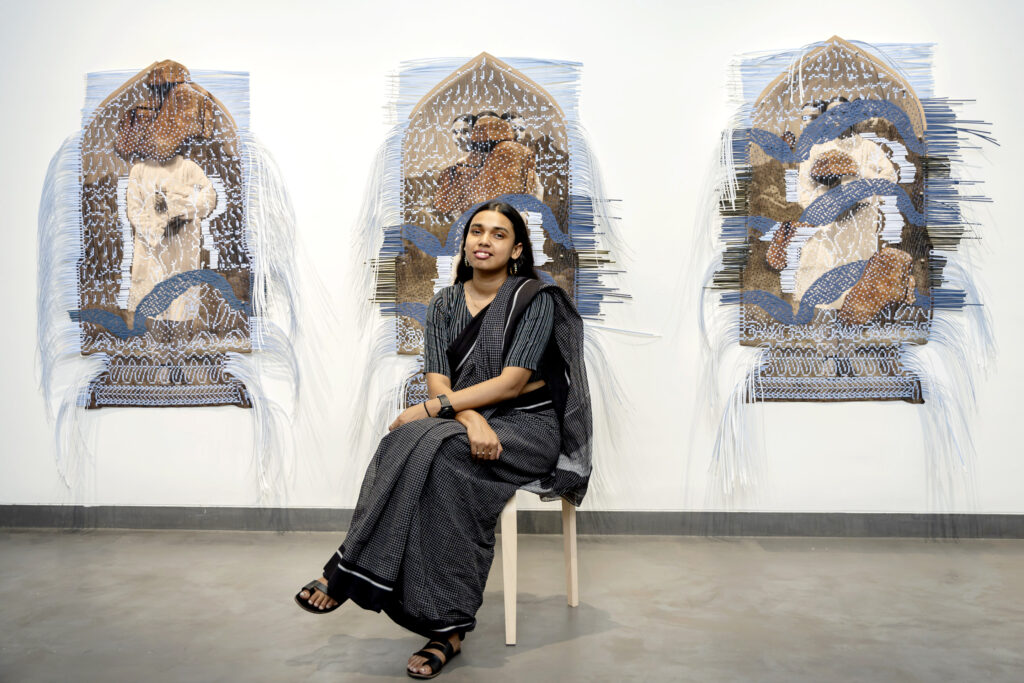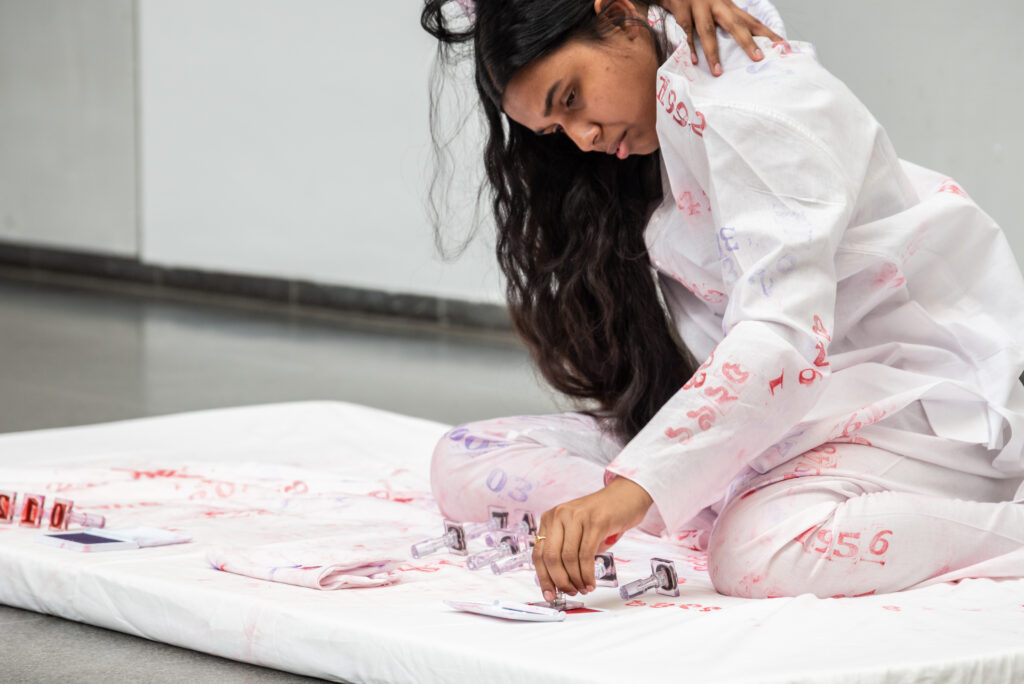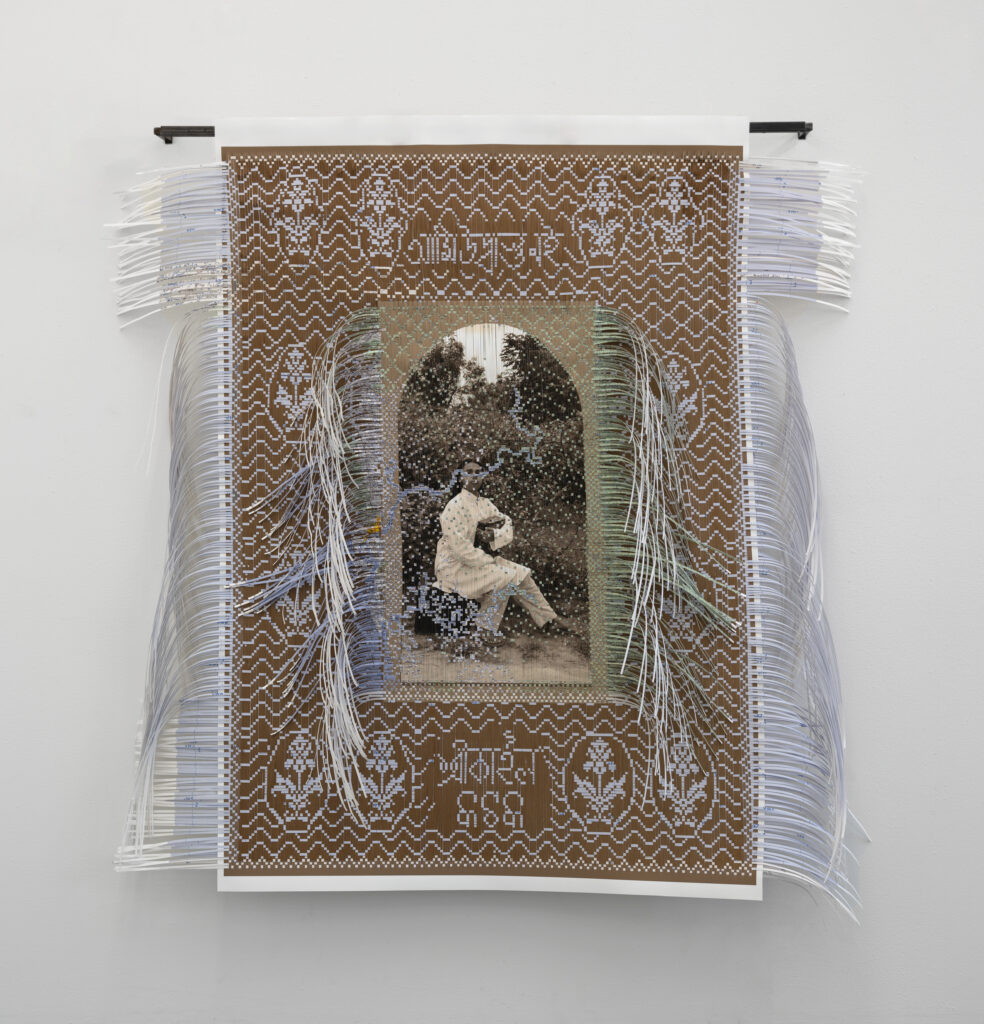SCROLL
Artist in Residence Program 2024 for Visual Arts: Arpita Akhanda has been in residence since December 16, 2024!
- Post date
- December 23, 2024
- Update date
- December 26, 2024
- Category
- Notice

Arpita Akhanda in front of her paper weaving work, Dendritic Data I, in the Open Studio at Hampi Art Labs.
Since its establishment in 2000, Kyoto Art Center has been supporting the activities of emerging and young artists and researchers who seek to create new artistic expression through exposure to different cultures by offering an “Artist in Residence” program. Artists and researchers from Japan and abroad stay in Kyoto for a certain period of time to engage in creative activities and exchange.
This year, we invited Arpita Akhanda from India to Kyoto Art Center as part of our open call program for artists from all over the world.
Arpita is in residence at Kyoto Art Center for three months from December 16, 2024 to March 15, 2025, primarily researching the Kamo River and Kyoto Yuzen Dyeing.
Arpita works in a variety of media, including paper weaving, photography, performance, installation, drawing, and video work. In addition to her work in India, she has an experience of residencies in Switzerland, the Netherlands, and most recently in Belgium. What kind of inspiration will she find during her stay in Kyoto? We are very much looking forward to it.
The results of her residency at Kyoto Art Center will be shared with the public in the form of workshops or exhibitions around the beginning of March.
【Arpita Akhanda profile】
Born in 1992, based in Shantiniketan, India. She engages in a practice that uses cross-disciplinary media such as paper weaving, photography, performance, drawing, and video.
Her work deals with the relationship between our present and past trauma through exploring inter-generational memories/knowledge systems, inherited family archives, and search for a home. Calling her body a “memory collector” or post-memorial site of the past is mediated not by recall but by recreation, imaginative investment, and projection. She is interested to understand how the body preserves and transmits colonial and postcolonial recollections over generations.
Through her work, which uses photo performance/performance, archival photographs and maps, and borrowed/shared memories, she constructs the relationship between time and place, movement and settlement, and self and the geo-body.
She is deeply interested in personal histories, which get diluted when placed next to the more institutional forms of narrative. It struggles to find a voice, a paragraph, or any recognition. She wants her practice to become a platform to bring personal and institutional memory together, on the same footing to understand the methods of history/memory-making.
She explores paper weaving as a process to weave the warp of memories with the weft of present situations to create a fabric that questions identity and existence. And the two layers, containing the past and the present, get interwoven to construct a pixelated, broken, hidden, dissected, and blurred visual language. She sees this language as a metaphor to speak for the forgotten and lost narratives.
Artist’s website is here.

Transitory Body
2023, Interactive performance, Performed at Kunstsammlung Nordrhein-Westfalen Museum (K21), Dusseldorf

আমি উদ্বাস্তু নই I (I am not a refugee I ) 2023, Paper weaving, Archival print on Innova smooth cotton high white 100% cotton 315 gsm, 63.7 x 57.4 inches approx.